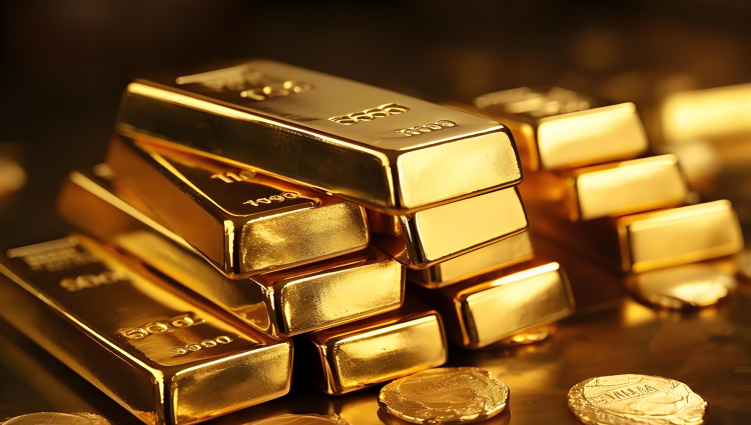Why is Gold Still Soaring?
Advertisements
In recent months, the global economic landscape has become increasingly complex, with a multitude of factors influencing market dynamics and investor behavior. While many developed economies continue to struggle with sluggish growth, emerging markets are also feeling the pressure. This multifaceted uncertainty has driven investors to seek refuge in gold, resulting in significant upward movement in gold prices across the globe. As a safe haven asset, gold has been increasingly favored amid heightened trade tensions and geopolitical instability. Escalating conflicts, particularly in regions such as the Middle East, have contributed to a general sense of market panic, propelling investors toward gold as a means of hedging against risk.
Central banks worldwide have made considerable efforts to stimulate their economies by enacting loose monetary policies. This includes major rate cuts and quantitative easing initiatives, which lead to an increase in money supply and a subsequent decline in the value of currencies. Notable examples include the Federal Reserve's interest rate reductions and the European Central Bank's easing measures, both of which have increased the attractiveness of gold in comparison to depreciating currencies. As interest rates drop, so does the opportunity cost of holding non-yielding assets such as gold, thereby inviting more investors into the market and driving prices upwards.
Interestingly, the supply and demand dynamics within the gold market are also undergoing significant shifts. Gold production from mining sources has encountered constraints, with new discoveries becoming increasingly rare. Environmental regulations and political unrest in certain mining jurisdictions have further complicated the production landscape. As a result, central banks have ramped up their gold purchasing, which effectively tightens the available supply in the market. On the demand side, developing nations like China and India have shown an insatiable appetite for gold jewelry, propelling consumer demand skyrocketing. Additionally, investment demand continues to rise, with the proliferation of gold exchange-traded funds (ETFs) underscoring the growing enthusiasm for gold among investors.

Market expectations regarding inflation also play a crucial role in shaping gold prices. Investor sentiment has increasingly anticipated rising inflation, particularly as central banks continue their accommodative monetary policies. Gold is traditionally viewed as a hedge against inflation, which has prompted investors to preemptively acquire gold in order to mitigate inflationary risks. Speculators in the gold market are often quick to react to sentiment shifts; when they perceive an upward trend in gold prices, they tend to drive further purchases, thereby creating a self-fulfilling prophecy that inflates gold prices even further. This bandwagon effect can lead to sharp price rises as emotion-driven buying takes its toll.
The interplay between the value of the U.S. dollar and gold prices cannot be overlooked. The dollar, typically viewed as a bellwether for the global financial system, has seen fluctuations that create opposite reactions in the gold market. Recently, as the dollar's strength waned, gold became a more attractive investment option for those utilizing other currencies, effectively making the precious metal cheaper for them. This can be attributed to various factors, including unpredictable employment statistics in the U.S. and mixed consumer spending data, leading to concerns over the broader economic outlook. Market speculation about the Federal Reserve's potential pivot on interest rates adds another layer of uncertainty, as signs of possible easing could further depress the dollar's value. Once again, as the dollar weakens, the mechanism of supply and demand within the gold arena goes into overdrive, as an influx of international buying drives up gold prices.
For instance, when investors see the dollar losing ground, they instinctively turn to gold, which tends to shine brighter during such downturns. The psychological aspect of investing cannot be ignored; gold is often viewed as a universal currency, removed from the constraints of geopolitical or currency pressures. Its desirability transcends national borders. This universal appeal, combined with increasing concerns about economic stagnation — exacerbated by trade wars and rising political tensions — propels gold investment further.
As we find ourselves in this intricate web of economic signals, the prospects surrounding gold continue to appear luminous, beckoning investors with promises of security amid chaos. The world is witnessing a confluence of factors — from monetary policy decisions by central banks to emerging market demands and speculative movements — that together nourish the appetite for gold. This captivating commodity is not merely an asset class; it embodies history, resilience, and a unique blend of social and economic significance that resonates deeply within numerous cultures.
Throughout the ages, gold has served as a symbol of wealth and a trusted medium of exchange. Today, it endures as a critical component of financial strategies for diversifying portfolios and preserving wealth. As long as the elements impacting the global economy remain tenuous and unpredictable, the allure of gold — with its rich historical legacy and time-tested stability — is likely to continue its ascendance, reflecting a pursuit of security in an ever-evolving world.